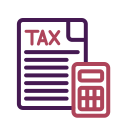Federal and Provincial Brackets: Two Ladders, One Climb
Think of two ladders side by side. Your total marginal rate is the sum of both rungs at your income level. This combined rate shapes decisions about RRSP contributions, charitable giving, and timing income events.
Federal and Provincial Brackets: Two Ladders, One Climb
Rates, credits, and bracket thresholds vary across provinces. Quebec administers its own provincial tax. A strategy that works beautifully in Alberta may need tweaking in Ontario or Nova Scotia to achieve similar outcomes.







